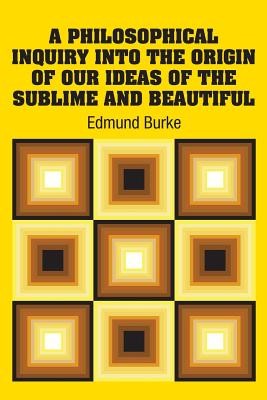
- Išsiųsime per 10–14 d.d.
- Autorius: Edmund Burke
- Leidėjas SIMON & BROWN
- Metai: 2018
- Puslapiai: 192
- ISBN-10 : 1731700490
- ISBN-13 : 9781731700490
- Formatas: 15.2 x 22.9 x 1.1 cm, minkšti viršeliai
- Kalba: Anglų
- Extra -15 % nuolaida šiai knygai su kodu: ENG15
A Philosophical Inquiry Into the Origin of our Ideas of the Sublime and Beautiful | knygos.lt
Atsiliepimai
Aprašymas
A Philosophical Enquiry into the Origin of Our Ideas of the Sublime & Beautiful is a 1757 treatise by Edmund Burke. It attracted the attention of such as Diderot & Kant. According to Burke, the Beautiful is what is well-formed & esthetically pleasing, whereas the Sublime is what has the power to compel & destroy. The preference for the Sublime over the Beautiful was to mark the transition from the Neoclassical to the Romantic era.For Burke, the origins of ideas of the beautiful & the sublime can be understood by means of causal structures. According to Aristotelian physics & metaphysics, causation can be divided into formal, material, efficient & final causes. The formal cause of beauty is the passion of love; the material cause concerns aspects of certain objects such as smallness, smoothness, delicacy etc.; the efficient cause is the calming of our nerves; the final cause is God's providence. What is most peculiarly original to Burke's view of beauty is that it cannot be understood by the traditional bases of beauty: proportion, fitness or perfection. The sublime also has a causal structure that is unlike that of beauty. Its formal cause is the passion of fear (especially of death); the material cause is equally aspects of certain objects such as vastness, infinity, magnificence etc.; its efficient cause is the tension of our nerves; the final cause is God having created & battled Satan, as expressed in Milton's Paradise Lost. Burke's was the 1st complete philosophical exposition for separating the beautiful & the sublime into their own respective rational categories.
EXTRA 15 % nuolaida
Kupono kodas: ENG15
Akcija baigiasi už 6d.17:18:53
Nuolaidos kodas galioja perkant nuo 10 €. Nuolaidos nesumuojamos.

- Autorius: Edmund Burke
- Leidėjas SIMON & BROWN
- Metai: 2018
- Puslapiai: 192
- ISBN-10: 1731700490
- ISBN-13: 9781731700490
- Formatas 15.2 x 22.9 x 1.1 cm, minkšti viršeliai
- Kalba: Anglų
For Burke, the origins of ideas of the beautiful & the sublime can be understood by means of causal structures. According to Aristotelian physics & metaphysics, causation can be divided into formal, material, efficient & final causes. The formal cause of beauty is the passion of love; the material cause concerns aspects of certain objects such as smallness, smoothness, delicacy etc.; the efficient cause is the calming of our nerves; the final cause is God's providence. What is most peculiarly original to Burke's view of beauty is that it cannot be understood by the traditional bases of beauty: proportion, fitness or perfection. The sublime also has a causal structure that is unlike that of beauty. Its formal cause is the passion of fear (especially of death); the material cause is equally aspects of certain objects such as vastness, infinity, magnificence etc.; its efficient cause is the tension of our nerves; the final cause is God having created & battled Satan, as expressed in Milton's Paradise Lost. Burke's was the 1st complete philosophical exposition for separating the beautiful & the sublime into their own respective rational categories.


Atsiliepimai